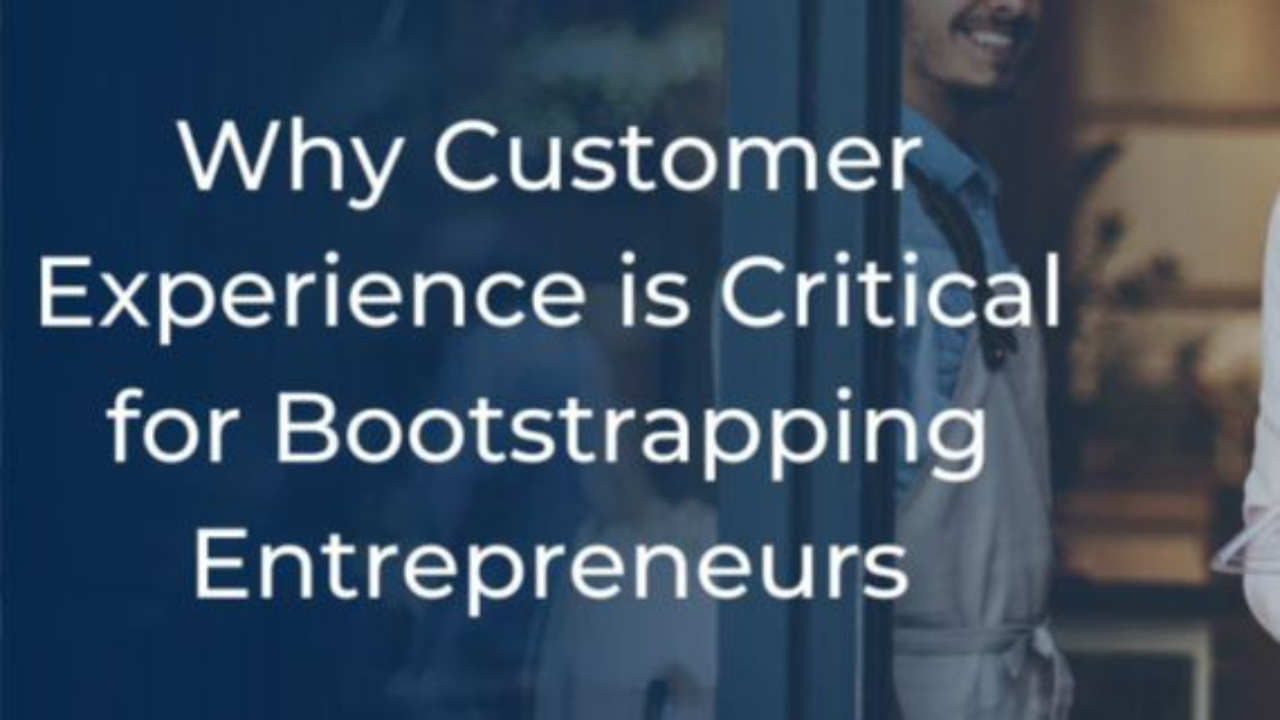Why Customer Experience is Critical for Bootstrapping Entrepreneurs
Dec 17, 2022
Treat your prospects like customers and your customers like prospects

McKinsey recently updated their ongoing Pulse research of B2B buyers and it is no surprise that customer experience is one of the top demands.
Top priorities for Buyers:
- Customers are looking for performance guarantees
- Real-time support
- Product availability is shown online
- Transparency on pricing
- Consistent experience across channels and the ability to buy online
The bottom is to take friction out of your customer’s buying process!
Instill customer experience early in your company’s growth journey, and once you have the other pieces in place, that early focus will pay off handsomely.
When you treat your prospects like customers and your customers like prospects, you are continuously earning the sale, and their continued business, by keeping the journey fluid. You’re creating a 360 experience for your customers, which increases retention and referrals. What’s not to like there?
Customer experience deserves your attention every day!
But when you’re first launching, there are about a million things going on, whether in your head or in the office. In the early days, many businesses fail for a myriad of reasons, but generally speaking, failure boils down to focusing most of your attention in the wrong places (or conversely, not focusing your attention in the right places).
Make customer experience a priority from the get-go

“Brett,” you’re probably thinking, “I’m trying to focus all my attention right now on GETTING customers. How can I worry about customer experience when I don’t have any customers yet?”
We are currently in the experience economy (a term first coined by Joe Pine). The experience you create for your customers is your key differentiator. Price, features, benefits…they’re in a race to the bottom. And while we spend a lot of money nowadays on branding, in many ways, your brand is determined by that customer experience. If you’re not delivering an exceptional one, your customers will talk about it (in person and especially, online), which will take the reins and define your brand for you.
Okay, so what do I do? How do I build my customer experience?

By identifying the traits shared by positive customer experiences, you can then apply them to your unique funnel, product or service and ultimately, the experience of your unique customers.
In my decades of experience working with and researching high-performing startups and larger organizations, I’ve identified these common threads among positive customer experiences:
The experience is consistent from Point A to Point B.
Whether a customer is working with your sales team or dealing with service, the communication methods, language, style and quality, among other things, should be seamless.
While examining individual components, keep the big picture in sight. For your customers, all the pieces should feel like one, fluid, consistent experience.
Customer expectations are known and addressed.
If you’re not meeting your customer expectations, no matter how good you think you are, you will fail. Market research can be especially important here (either formally or through social media/SurveyMonkey/etcetera).
Be careful about asking friends and family for input. While it can sometimes be helpful, it’s understandably biased in your favor, and while it’s nice to hear good things — you don’t need sunshine and roses right now. You want pushback, questions and insights to help you create an unparalleled experience for your customers.
Success is measured

Revenue is NOT a KPI for customer experience. I mean obviously, it matters, but you could be leaving your projections in the dust despite a poor customer experience. While that may be temporarily lulling you into a false sense of security, it always catches up to you in the end.
Your Net Promoter Score, or NPS, is often used to quantify customer experience. But many businesses only measure NPS once per year. When you’re a startup, a year of poor customer experience can lead to no Year 2.
NPS is important, no doubt, but that’s the bare minimum. Regular, thorough interviews and surveys are essential here. Eliminating bias is also incredibly important. Market research can be extremely powerful; however, many organizations fall into the trap of asking questions that lead to their desired or assumed conclusions.
Although technology has made it easier than ever to create and conduct your own focus groups, interviews and/or surveys, it oftentimes makes sense to, at a minimum, hire a market research expert or consultant to help you craft questions that result in REAL, measurable feedback. Remember, you don’t want sunshine and roses. You want to create a positive customer experience that leads to increased revenue. And ultimately, the success of your business.
What are you doing to create exceptional customer experiences?
Sometimes it can be hard for entrepreneurs to step back and see the big picture, or really, to get out of their own way. The right mentor can help you see things a bit more clearly and prioritize those elements that will help propel you forward.
I actually talked about this exact topic recently with Bob Furniss, otherwise known as the “Godfather of Customer Experience.” To dig even deeper into this topic, check out my interview with Bob. And be sure to subscribe to my show, “B2B Zero to Ten” for more conversations like this one that can help you take your startup to the next level.
Follow along with all new updates
Sign up to be notified when new posts are available.
Don't worry, your information will not be shared.
We hate SPAM. We will never sell your information, for any reason.

